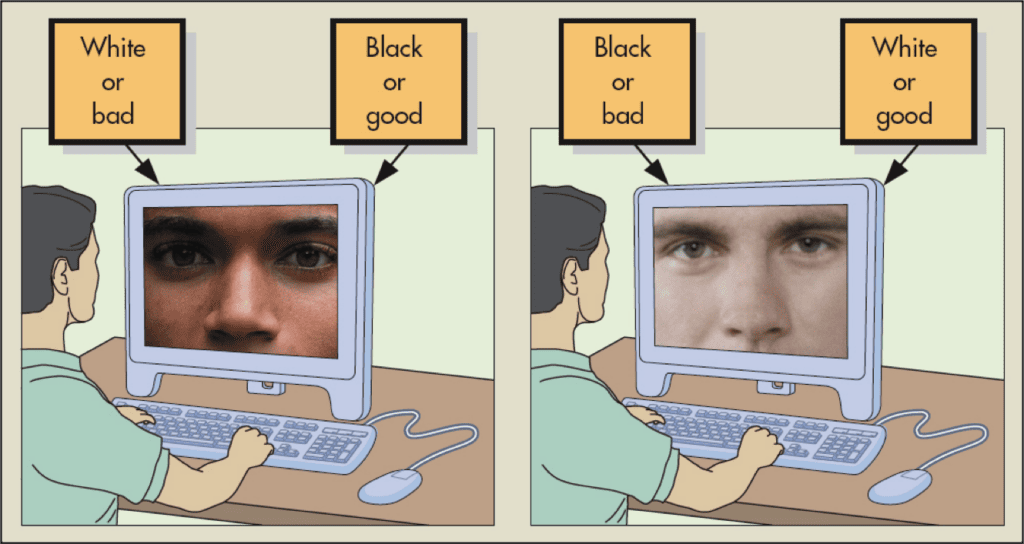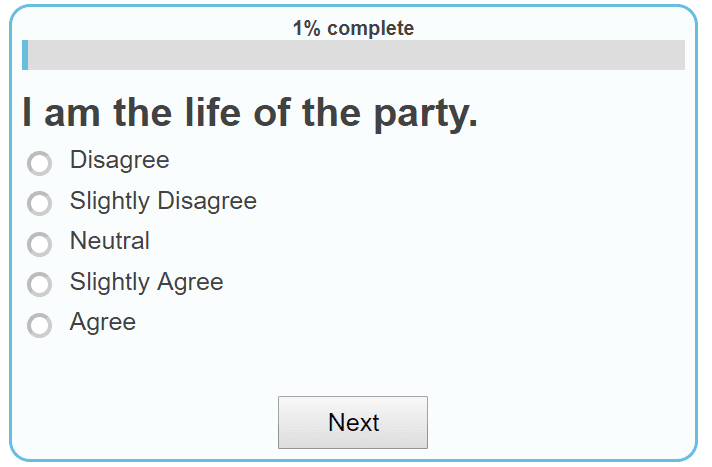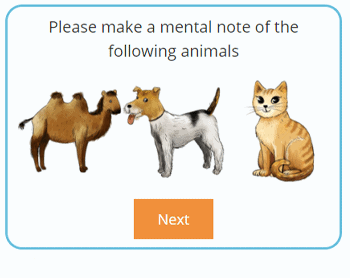Do you have a bias toward one group of people? It could be millennials, Muslims, or white people. Most people are going to say no - they treat and see everyone equally. But tests like the Implicit Association Test may prove otherwise.
What Is the Implicit Association Test?
The Implicit Association Test proves that the answer might be more complicated than you think. This test is not considered the perfect measurement of implicit bias or prejudice throughout the country, but it may offer some insight into how we associate groups of people with different traits, behaviors, and feelings.

The mechanism of the IAT involves rapidly categorizing images and words into groups. For instance, in a race-based IAT, participants might be asked to quickly sort images of faces and positive or negative words. If a participant more quickly associates positive words with faces of one race and negative words with faces of another race, it might indicate an implicit bias.
It's important to note that the IAT doesn't measure overt prejudice or discriminatory behavior directly. Instead, it gauges the strength and direction of automatic associations in memory.
Critics and proponents of the IAT have engaged in extensive debates about its validity and implications.
Supporters argue that the test offers valuable insights into unconscious biases that can influence behavior, even in individuals who believe they hold no prejudices.
Detractors, on the other hand, raise concerns about the test's reliability, its potential for misinterpretation, and the danger of over-relying on its results. Despite these debates, the IAT has been widely adopted in social psychology research and has spurred increased interest in the study of implicit biases.
History of the Implicit Association Test
The Implicit Association Test (IAT) was created in 1998 to measure and detect a person’s implicit biases. These biases primarily have to do with race; however, the test can also be used to measure biases in relation to sexual orientation, gender, age, and other categories.
What Is Implicit Bias?
Before we talk about how this test measures biases, let’s briefly review the definition of implicit biases. A bias is a tendency to favor one group of people over another, often formed unfairly, and without logic or reason behind it. If you were to stand up and say, “I think white people are better than black people,” then you’re revealing quite a strong and unfounded bias toward white people.
Standing up and telling a crowded room that you like one group of people the best is a bias, but not an implicit bias. An implicit bias is an unexpressed bias. Someone who claims that they are not racist, but calls 911 on a black person who is not causing any harm, is likely to have an implicit bias.
Does It Prove Racism?
Firstly, you should know that the IAT is a tool designed to measure the strength of automatic associations between concepts in an individual's memory. For instance, how quickly you associate positive words with images of one racial group compared to another can provide insights into implicit biases. However, it's crucial to note that the IAT doesn't directly measure racism or any form of overt prejudice. Instead, it gauges the presence and strength of automatic, unconscious associations.
Now, you might wonder, "If the IAT doesn't measure racism directly, what does it tell us?" The IAT highlights potential biases that might be lurking beneath conscious awareness. These biases can influence perceptions, judgments, and behaviors, often in subtle ways. But here's where it gets tricky: just because you show a bias on the IAT doesn't mean you'll act in a discriminatory manner. Many factors, including conscious beliefs and societal norms, play a role in shaping behavior.
In conclusion, while the IAT is a valuable tool for understanding implicit biases, it doesn't "prove" racism. As you navigate discussions on this topic, remember to approach the IAT as a window into unconscious associations, not as definitive proof of personal prejudice. By understanding the nuances of the IAT, you'll be better equipped to engage in informed conversations about bias and its implications in society.
How the IAT Measures Implicit Bias
In 1998, America was twenty years into being a supposed “post-racial” country, one free from prejudice or bias toward people of a certain race. Scientists decided to test this theory with the Implicit Association Test. The same year, Project Implicit was founded. This non-profit organization aims to collect data for studies in social psychology and educate people about implicit bias. You can go on the Project Implicit website after this video to take the IAT yourself!
While you can take many forms of this test, I’m going to walk you through the race task on the Project Implicit website. This task gives the participant two sets of words and two sets of images. One set of words has positive meanings while the other set of words has negative meanings. One set of images is of black faces while the other set of images is of white faces.
Participants are instructed to use the “E” and “I” letters on their keyboard to categorize individual images as “black faces” and “white faces.” Then, they’re instructed to use the letters to categorize the words as “bad” and good.”
Then, the images and words are categorized back to back. The “E” letter may be used to categorize items as “black faces” or “bad words.” The “I” letter may be used to categorize items as “white faces” or “good words.” Then, the categories or letters used to categorize the items may switch. All the while, your responses are being timed and you are encouraged to move fast.
How Long Does the IAT Test Take?
The test takes around 10 minutes. If you take the IAT on Project Implicit’s website, you may also be asked to answer questions before or after the test. These questions may relate your demographics or how you feel about certain opinions. For example, you may be asked to answer questions about your opinions on infectious diseases or your political opinions.
After, you are given results. The results may say that you have no bias, or that you hold a “slight,” “moderate,” or “strong” bias toward black people or white people. Again, you can take different versions of the IAT to assess your implicit biases toward people of different races, sexual orientations, or even your self-esteem.
Criticism of the Implicit Association Test
Maybe you’ve heard of the IAT before. In an episode of King of the Hill, Hank and Peggy take the test. They call it the “racist test.” The test was featured on Oprah. It was also discussed in Malcolm Gladwell’s book Blink. The book discusses snap judgements and using limited information and a thin lens to make critical decisions. This idea is closely related to prejudices, which are opinions formed with a narrow set of information.
But although it has been praised by thought leaders around the country, it’s not considered a perfect test. Publications like The New York Times and the Wall Street Journal have both criticized the test. Some of these criticisms stem from the fact that people may take the test multiple times and get different answers. Or, other factors could play into someone’s reaction times while taking the test.
Response To Criticism of IAT From Project Implicit
The creators of the test know it’s not perfect, either. Here’s what the Project Implicit website has to say about the IAT:
“We cannot be certain that any given IAT can diagnose an individual. At this stage in its development, it is preferable to use the IAT mainly as an educational tool to develop awareness of implicit preferences and stereotypes. For example, using the IAT to choose jurors is not ethical. In contrast, it might be appropriate to use the IAT to teach jurors about the possibility of unintended bias. Using the IAT to make significant decisions about oneself or others could lead to undesired and unjustified consequences.”
Let’s say you give the test to a friend or family member and the results show that they have a bias toward white people. It wouldn’t be appropriate to stamp a label on their forehead that says “racist” and kick them out of your life. But it would be appropriate to have a discussion with them about bias, empathy, and the impact of prejudice on others.
What Is the Implicit Association Test Used For?
Project Implicit is currently using the IAT test results in larger studies of social psychology. If you want to learn more about the roots of prejudice and bias, it might benefit you to learn more about theories within social psychology. How could the things you see on TV impact the way you view others, or yourself? Why do we tend to separate ourselves from people who appear “different?” How can awareness and “unlearning” help you to see people and groups in a more objective light?
These are questions that social psychology can help you explore.



